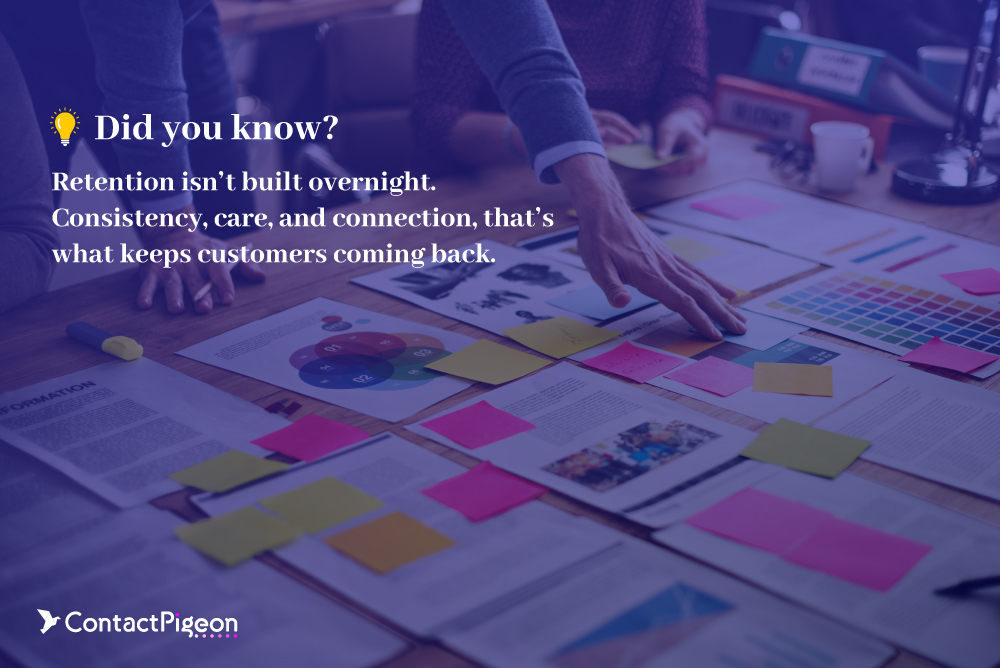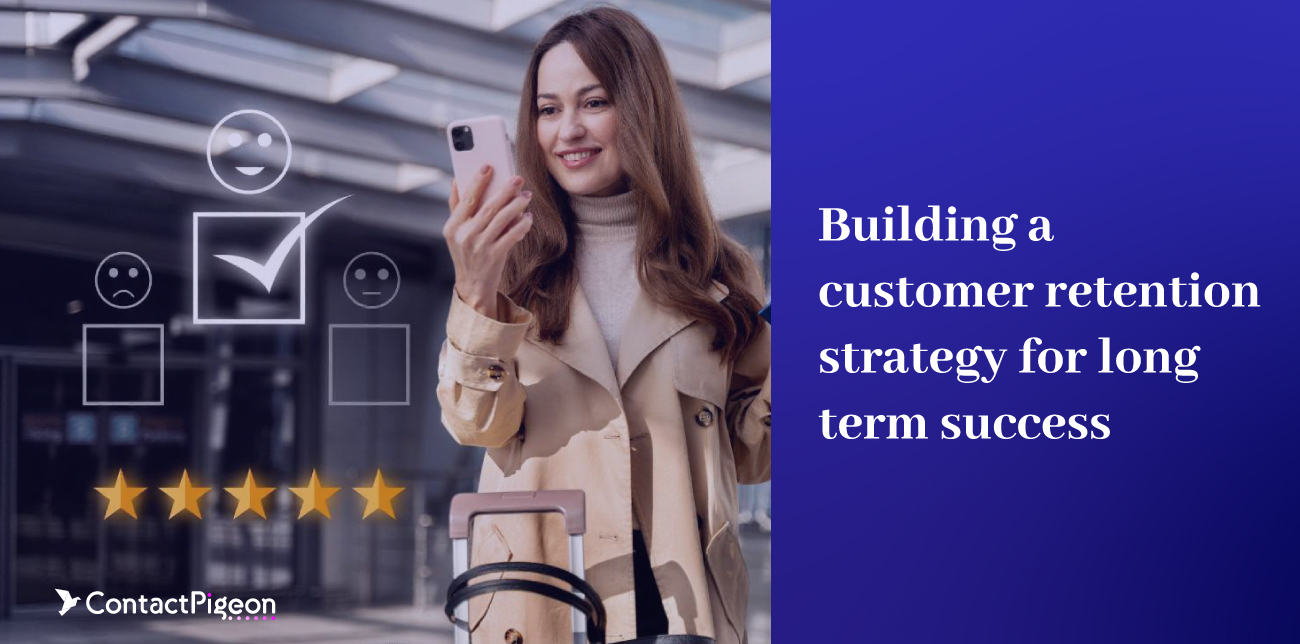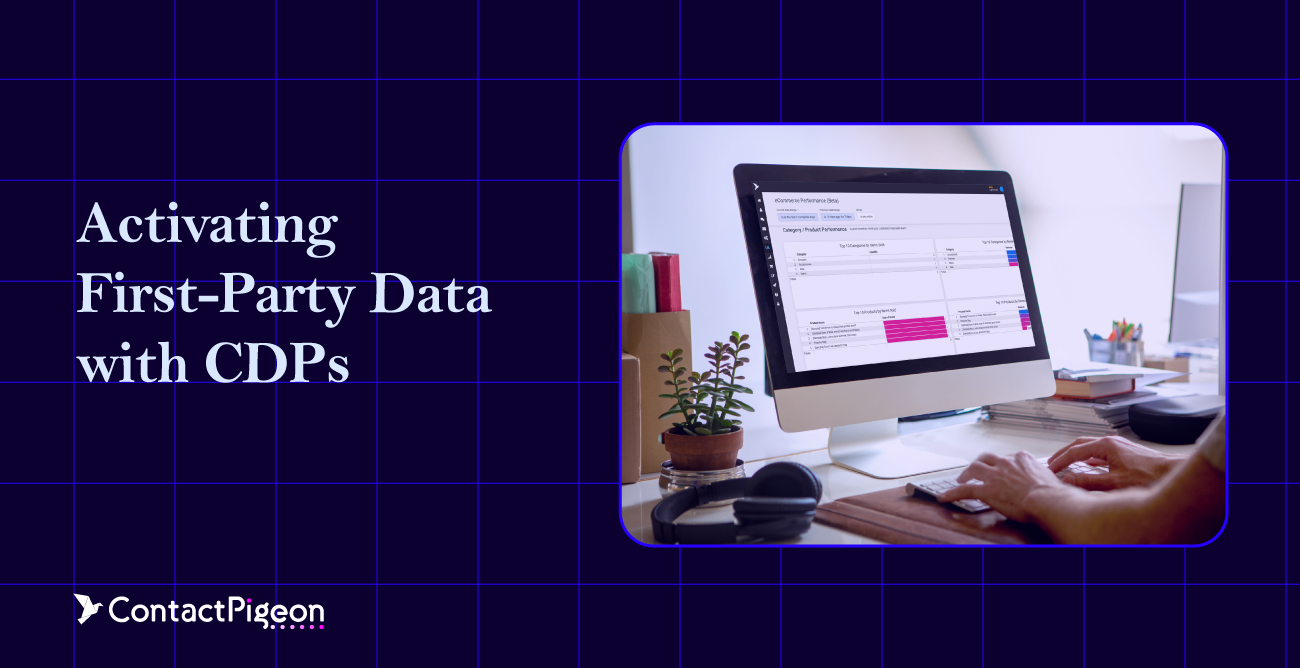Here’s a number that should make every retail executive pause: Retaining a customer can be 5 to 25 times more cost-effective than acquiring a new one. Investing in a solid customer retention strategy is a smart move in an industry where margins are tight and competition is relentless. Rather than pouring resources into short-term wins and constant acquisition cycles, leading retail brands are shifting focus to the customer retention journey, nurturing long-term relationships that drive higher lifetime value and predictable revenue.
Why customer retention matters more than ever
Customer acquisition may drive short-term spikes, but retention builds the kind of brand equity you can bank on. A well-defined customer retention strategy turns fleeting transactions into lasting relationships, maximizing lifetime value while reducing operational strain.
- Lower acquisition costs: Acquiring a new customer can cost up to 5x more than retaining an existing one. That drains your marketing budget.
- Bigger basket sizes: Repeat customers spend 67% more than new ones, translating into higher average order value without additional marketing spend.
- Stronger profitability: Loyal customers are 5x more likely to repurchase, and far more likely to try new products or refer others, driving organic growth.
- Compounding growth: Retained customers fuel long-term revenue through consistent buying behavior, creating a stable foundation quarter after quarter.
- Brand resilience: In volatile markets, a loyal customer base cushions you from seasonal slumps or rising acquisition costs, and that’s something new customer campaigns can’t guarantee.
Core elements of a successful customer retention strategy

A strong customer retention strategy is the result of intentional, consistent touchpoints that make every shopper feel like more than just a transaction. Below are four essential components that high-performing retail brands master to keep customers coming back.
Personalized customer experience
Personalization transforms the customer retention journey by making each interaction feel curated and intentional, seeing that customers don’t just browse for products. From dynamic product recommendations based on browsing behavior to tailored messaging triggered by purchase history, a personalized experience builds emotional loyalty and positions your brand as one that truly “gets” its audience.
Outstanding customer support
Support is a core pillar of retention because shoppers are not satisfied with quick answers. On the contrary, they want empathy, efficiency, and real solutions. Whether through live chat, social DMs, or a knowledgeable support team, outstanding service often turns a minor issue into a major trust-building moment. One great support experience can turn a casual customer into a lifelong advocate.
Reward programs and loyalty incentives
Loyalty needs to feel like a two-way street. Effective reward programs give customers a reason to keep choosing your brand. Think points systems, member-exclusive discounts, early access to product drops, or cashback incentives. The goal isn’t just to drive the next purchase, but to make them feel like they’re part of something valuable and exclusive.
Regular customer feedback loops
Customers expect progress and consistency, not necessarily perfection. Creating structured feedback loops through surveys, post-purchase emails, or even conversational channels like WhatsApp shows customers that their voice matters. More importantly, acting on that feedback deepens trust and signals that your brand evolves based on real input, not assumptions.
Step-by-step guide to building a customer retention strategy
Successful retention strategies require continuous learning and optimization.
| Step | Summary |
|---|---|
| Step 1: Understand Your Customers Deeply | Gather data from all touchpoints to learn behaviors, preferences, and pain points. |
| Step 2: Segment Your Audience | Group customers based on shared traits to deliver more relevant and effective messaging. |
| Step 3: Design a Tailored Loyalty Program | Reward behaviors that drive value with personalized incentives and exclusive benefits. |
| Step 4: Enhance Your Omnichannel Experience | Ensure a seamless journey across online and offline channels to boost engagement. |
| Step 5: Automate Personalized Communications | Use behavior-based triggers to send timely, relevant messages that convert. |
| Step 6: Monitor, Test, and Improve Constantly | Analyze performance regularly and run A/B tests to optimize retention efforts. |
Step 1: Understand your customers deeply
Effective retention starts with knowing who your customers truly are. By analyzing purchase history, browsing behavior, feedback, and demographic data, retail brands can build rich buyer personas that go beyond surface-level assumptions. These insights help predict future needs and enable proactive engagement, not just reactive responses.
Start building detailed customer profiles today to boost loyalty and revenue. Explore our guide about Customer Profiles!
Step 2: Segment your audience
Not all customers are created equal—nor should they be treated that way. Segmenting your audience by behavior, lifecycle stage, or value allows for targeted messaging and offers that resonate with specific needs. Ditching the one-size-fits-all approach leads to better timing, better content, and stronger emotional connections.
Boost customer engagement by targeting the right audience. Use ContactPigeon’s segmentation tools for precision marketing
Step 3. Design a tailored loyalty program
Generic discounts won’t foster loyalty. Instead, develop a program aligned with what your key segments care about, whether it’s cashback, exclusive access, birthday perks, or a gamified points system. Customizing loyalty experiences builds emotional affinity and drives repeat purchases with purpose.
Step 4. Enhance your omnichannel experience
Today’s customer journey is rarely linear. A shopper might browse on mobile, add to cart via desktop, and complete a purchase in-store. That’s why consistency across channels is essential—from unified messaging and offers to streamlined customer service. Omnichannel cohesion isn’t a luxury; it’s an expectation.
Personalization is key to loyalty. With a complete omnichannel personalization strategy for retailers, you can connect better with your audience.
Step 5. Automate personalized communications
Automation is not just efficient, but relevant at scale. Use marketing automation to deliver timely, behavior-driven communications via email, SMS, and ads. Whether it’s a replenishment reminder, a thank-you message, or a win-back campaign, personalization drives results when it feels real-time and relevant.
Step 6: Monitor, test, and improve constantly
Retention isn’t a “set-it-and-forget-it” tactic. Continuously monitor KPIs like repeat purchase rate, customer lifetime value, and churn. Run A/B tests, evaluate what’s working, and refine your approach to stay ahead of shifting customer expectations. The best customer retention strategies are always evolving.
Proven customer retention strategies that work
These tried-and-tested strategies are used by leading retail brands to turn first-time buyers into loyal, long-term customers. Focusing on consistent, personalized engagement across the entire customer retention journey, each tactic is designed to build trust, increase repeat purchases, and strengthen emotional connections that keep customers coming back.
| Strategy | Summary |
|---|---|
| Welcome Emails with Incentives | Offering a discount or perk in your first email encourages first-time buyers to convert and sets the tone for brand loyalty early on. |
| Exclusive Early Access Offers | Giving loyal customers early access to new products or sales makes them feel valued and more likely to stay engaged with your brand. |
| Post-Purchase Thank You Campaigns | A timely, personalized thank-you email post-purchase reinforces trust and invites further interaction, increasing the chance of repeat purchases. |
| Anniversary and Birthday Rewards | Celebrating milestones with special offers creates emotional connections and motivates customers to return to your store regularly. |
| Subscription or Replenishment Models | Recurring delivery options simplify reorders and build habitual buying behavior, keeping customers within your ecosystem longer. |
Important metrics to measure customer retention success
Monitoring these key metrics every month gives you a clear view of how well your customer retention strategy is performing. Regular tracking allows retail brands to catch churn risks early, optimize loyalty efforts, and continuously improve the customer retention journey.
| Name | Definition | Formula |
|---|---|---|
| Customer Retention Rate (CRR) | Percentage of customers a brand retains over a specific time period. | (Customers at End − New Customers) ÷ Customers at Start × 100% |
| Repeat Purchase Rate | The percentage of customers who made more than one purchase. | Repeat Customers ÷ Total Customers × 100% |
| Customer Lifetime Value (CLV) | Estimated total revenue a business can expect from a single customer account. | Average Order Value × Purchase Frequency × Customer Lifespan |
| Net Promoter Score (NPS) | A metric that gauges customer loyalty and likelihood to recommend your brand. | % Promoters − % Detractors (from a survey score 0–10) |
| Churn Rate | The percentage of customers lost over a specific period. | Customers Lost During Period ÷ Total Customers at Start × 100% |
Common mistakes to avoid in your retention strategy
Even the most well-intentioned customer retention strategy can fall short if it overlooks a few key pitfalls. Here are common mistakes that often sabotage long-term success:
- Ignoring customer feedback: Failing to listen to what customers are saying, or not saying, can lead to missed opportunities for improvement and connection.
- Overcomplicating loyalty programs: Programs with confusing rules, limited value, or too many hoops to jump through often drive customers away instead of encouraging repeat purchases.
- Treating all customers the same: Blanket messaging and generic offers ignore individual behaviors, needs, and values, making customers feel like just another number.
- Failing to track and adapt strategies: Without regular performance tracking and optimization, even the best plans grow stale. A dynamic strategy evolves alongside customer expectations and market shifts.
Retention is the new growth engine
Customer loyalty isn’t built overnight, but with the right customer retention strategy, it can become your strongest competitive advantage. As acquisition costs continue to rise, retention delivers higher ROI, greater customer lifetime value, and more predictable revenue over time. Whether you’re just beginning to invest in retention or scaling your efforts with automation and omnichannel personalization, the principles in this guide are designed to work for brands of every size.
Ready to turn your one-time buyers into lifelong brand advocates? Let’s talk about how ContactPigeon can help you boost loyalty and craft a retention strategy that drives measurable growth.
[Book a free demo today!]



![Benchmarking Growth Strategies of Top Fashion Retailers [Study]](https://blog.contactpigeon.com/wp-content/uploads/2025/11/top-fashion-retailers.jpg)